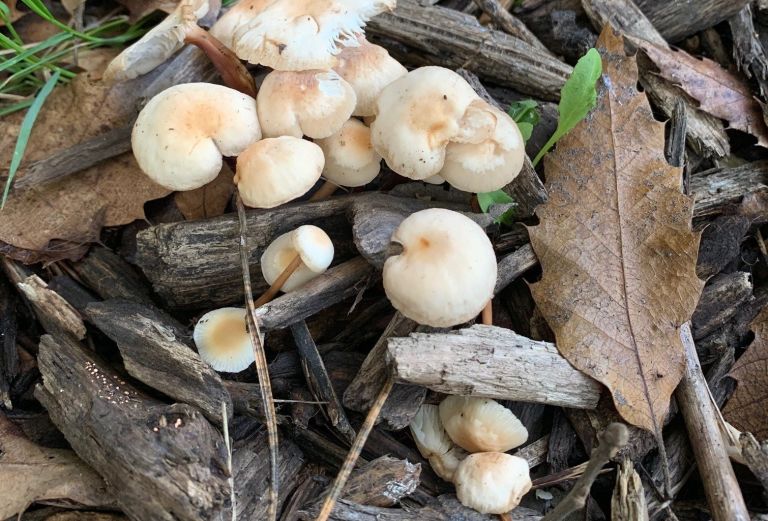
The days are getting shorter and colder, the plants at Fulham Palace are dying back, and autumn is upon us.
However, there is still much colour and intrigue in the garden! Fulham Palace’s garden apprentice’s share their October highlights.
All around the garden mushrooms are popping up, with beautiful on the main lawn, and under the Camellia on the north walled garden wall (and even in seed trays in the vinery!). Fungi stay hidden for most of the year as mycelium, a tiny network of underground filaments similar to roots before producing the fruiting body we know as a mushroom. Many fungi have a symbiotic (mutually beneficial) relationship with trees, and they grow into tree roots to share sugars and minerals. Now is the time to look for chanterelles, ceps, morels and puffballs – although please don’t eat anything unless you are completely sure of its identity.
– Ellie Edmonds

After a summer of being unassuming green foliage, the ‘’Heath Aster’’ Symphyotrichum ericoides has erupted into a Milky Way of small white flowers. The daisy-like blooms make a floaty bouquet or add a haze of stars to other cut flowers. It is a reminder that the growing season is far from over and the garden still has surprises to share.
– Hattie Moore

Another interesting phenomena can be observed on the flower heads of Centaurea macrocephala giant knapweed from the Asteraceae family. This year the seeds are already sprouting inside the dry flowerheads, possibly showing us the promise of a new season. Giant knapweed is a robust perennial from the Caucasus, introduced to Britain in 1807. It has a striking yellow thistle type bloom and we retain the seed heads after flowering for added attraction.
– Alfonso Moreno
